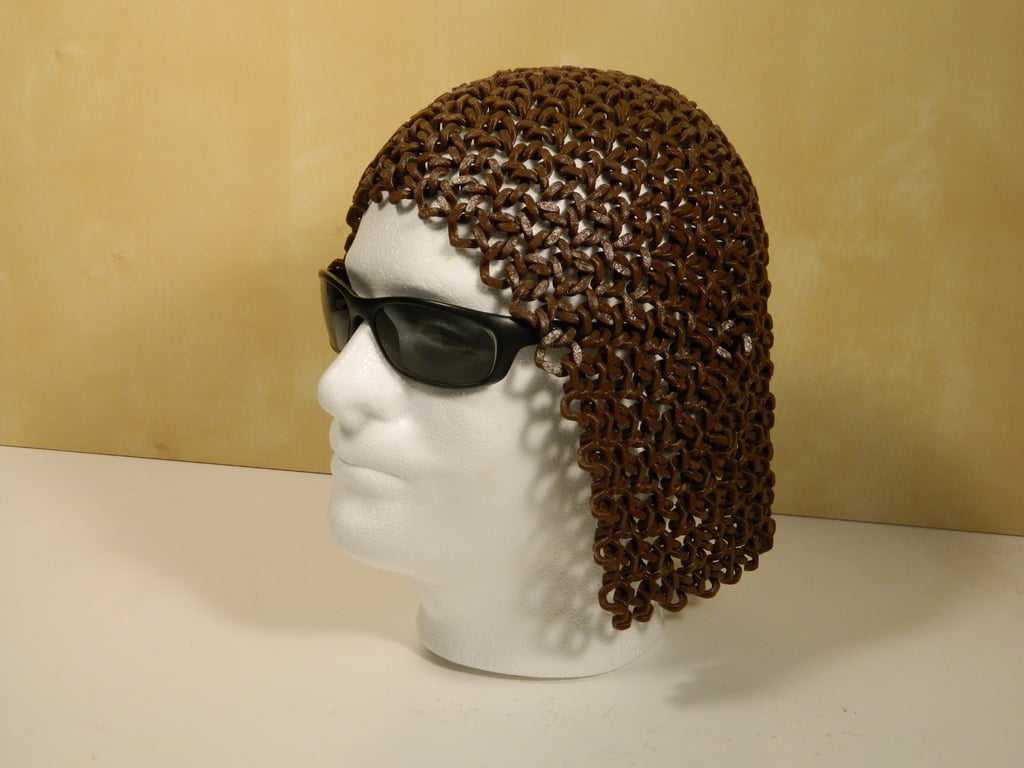
3D chain mail hood
thingiverse
It has always been a challenge to connect pieces of flat printed chain mail in a way that conforms perfectly over a three-dimensional surface. Unlike regular fabric, which can be joined with curved seams to create a smooth pattern, chain mail ends up with loose or bunched links, resulting in an unappealing appearance. I've observed 3D-printed clothing where each link is customized to fit the shape of the garment, but this requires individualized design for every piece. To solve this problem, I modified a previous chain mail design (https://www.thingiverse.com/thing:2611564) to make it suitable for printing as equilateral triangles. By joining six triangles, you get a flat pattern, but combining five triangles that meet at a single point creates an irregular shape. An icosahedron consists of twenty triangles, each meeting at five points, which inspired this project. The hood in the example is made up of twelve triangles, with each triangle featuring seven links on each side. The chain mail pattern has about 10% slack to allow for smooth curvature within each triangle. Instead of printing twelve separate triangles, I opted to print six pairs of triangles that were joined together, saving significant time and making it easier to fit the pieces on my 8"x8" (200x200mm) bed. The entire project took approximately three days to complete, with each pair taking about six hours to print. I printed one pair during the day and another at night to speed up the process. The actual joining time required only around thirty minutes. To join the triangles, I snipped a link at the base flat, then bent it open and snapped it onto the corresponding link. Although the links were flexible, I did break a few while working with them. However, keeping the links warm under a hot lamp made them more resilient during the joining process. For this particular hood, I didn't bother to re-bond the split links, but I have been experimenting with different methods. The most efficient and least messy approach I've found so far is to drill a 0.078" (2mm) diameter hole through the split link and then refill it with PLA using a handheld 3D printing pen. To test the strength of the re-bonded links, I conducted some basic tests: A solid link could withstand a load of 42 pounds (187 Newtons), while a split link broke under 13 pounds (58 Newtons). After re-bonding, the links demonstrated a significant increase in strength, withstanding loads of up to 26 pounds (116 Newtons). The last image shows the inside of the hood, revealing some of the split links and areas where five links meet instead of six. The Styrofoam head used in the photos measures about 22 inches (559mm) in circumference, and you can see how well the hood fits. My own head is approximately 23 inches (584mm) in circumference, and it fits fairly well. To adjust the size of the hood, simply scale the STL file. I believe this technique could eventually be used to create an entire suit, but software that maps equilateral triangles onto a three-dimensional surface would be necessary for this application.
With this file you will be able to print 3D chain mail hood with your 3D printer. Click on the button and save the file on your computer to work, edit or customize your design. You can also find more 3D designs for printers on 3D chain mail hood.
